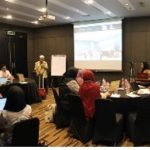July 2023
EXECUTIVE SUMMARY
One way to assess if mandatory grain (wheat flour, maize flour, rice) fortification is effective is to compare biomarkers of nutritional status in a subset of the population before and after fortification starts. WHO has a Vitamin and Mineral Nutrition Information System (VMNIS) which collates micronutrient biomarker data available for multiple countries, population groups and timepoints. The purpose of this project was to assess if there are countries in WHO’s VMNIS with mandatory grain fortification that have comparable micronutrient biomarker data for the same population group pre- and post-initiation of fortification.
Using the Global Fortification Data Exchange, countries were identified that have mandatory grain fortification and include select micronutrients (those included in the VMNIS: vitamins A, D, B1, B2, B6, B9, B12, iron, selenium or zinc) in their fortification standards. The year mandatory fortification became effective was noted for each country, as well. WHO’s VMNIS was searched for the same biomarker data (e.g. serum folate) available for the same population group (e.g. women of childbearing age) with comparable methods (e.g. venous blood analyzed) in the pre- and post-fortification periods for each country.
For most of the nutrients with biomarkers in the VMNIS, no countries were identified with comparable biomarker data pre- and post-fortification of grains, with the following exceptions. There are zinc data before and after mandatory wheat flour fortification in Fiji; however, the country has already issued a report with these data. There are pre- and post-fortification data on anemia prevalence for five countries (Cameroon, Ghana, Guatemala, Rwanda, and Uganda); however, because anemia is not exclusively due to nutrient deficiencies, it is more challenging to ascribe changes in anemia prevalence to a nutrient intervention. For iron-deficiency anemia, there was one country with pre- and post-fortification data that, according to an internet search, has not published a report comparing these estimates: Oman. Colleagues in Oman will be contacted to encourage them to prepare a report with findings and to make the report publicly available.
In conclusion, there are few countries in WHO’s VMNIS with mandatory grain fortification that have comparable micronutrient biomarker data for the same population group pre- and post-initiation of fortification: Fiji for zinc and Oman for iron-deficiency anemia. This exercise should be repeated in a few years to potentially identify countries with existing data that can inform the effectiveness of fortification.
How to cite: Food Fortification Initiative. Exploring the Use of the WHO Micronutrients Database to Identify Pre- and Post-Fortification Biomarker Data for Countries with Mandatory Grain Fortification. Food Fortification Initiative: Atlanta, USA.2023.






























